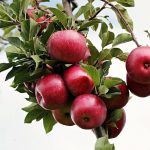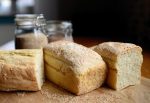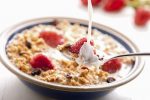
Dietary fibre is an important nutritional ingredient and along with bioactive compounds extremely beneficial to human and animal health. The capability for using extrusion to modify the properties of dietary fiber may well prove highly invaluable in handling what has long been a cheap material and often thrown away.
Increasing the amount of dietary fibre in the diet is a major draw for nutritionists and dietitians wishing to improve the food value of what we consume. Dietary fibre though is not always easy to consume. It is also one of those food components which is regularly discarded because it is not easily extracted or usable as a raw material. The food process industry uses extrusion to modify the properties of dietary fibre, making it easier to incorporate into products and more palatable to the consumer.
Dietary fibre takes two basic forms – insoluble fibre and soluble fibre. As we shall see the two types have very dramatic effects on the products into which they are incorporated.
Extrusion Cooking
One way to use extrusion to modify the properties of dietary fibre that is commonly used in the food process industry is through extrusion cooking. The process alters the properties of fibre by modifying its structure and thus its chemistry.
Extrusion cooking is a high shear and temperature process used to produce vast range of foods from cereals through to snacks. Many of these foods are now fibre-rich aiming to exploit the nutritional claims made for dietary fibre generally. It is possible to use extrusion cooking in a number of ways – adjusting temperature, shear, moisture levels, mixing combinations and ingredients to create the optimal tasting product with some retained nutritional benefit.
Extrusion puffing is probably the most important characteristic of an extruded product. This in turn governs the textural, functional and sensory attributes of the product. Early work showed that if you incorporated fibre into the mixture then it invariably ended up with compact, tough, crispless, tough textured food unloved by the consumer. This was usually characterised by a low expansion. A number of examples can be found in the pursuit of a reasonable level of expansion ratio (Breen et al., 1977; Andersson et al., 1981; Lawton et al., 1985).
Insoluble Fibre Reduces Expansion
There are plenty of studies which show that increasing the content of fibre reduces the expansion of an extruded product. It has been observed with the following:-
- wheat bran (addition up to 30%) (Lue et al., 1990; Onwulata et al., 2001; Brennan et al., 2008).
In more recent times, judicious addition of soluble fibre as opposed to addition of insoluble fibre appears to help preserve better expansion volumes without impacting bulk density as much.
The differences in expansion behaviour are due to interactions between the starch as it gelatinizes and its interactions with the fibre, differences in water sorption and plasticization behavior, and physicochemical transformations during extrusion cooking. If you treat the insoluble fibre beforehand, the performance of the fibre improves during extrusion (Robin et al., 2012).
The main material needed for expansion which is a key quality parameter in a snack is starch and the main source is always flour.
Barley Flour
Barley flour is used in a number of products because it comes with its own package of beta-glucan if that has not been extracted and removed during flour processing. The composition and physiological performance of barley flour depends on all those factors that can be altered in extrusion cooking.
One study by Østergård et al., (1989) showed the dietary fibre of wholemeal barley flour increased with extrusion and there was a reduction in the total starch content at the time. One element to this would be the probable formation of resistant starch which is a dietary fibre in its own right. There may also have been a small amount of fibre extracted from insoluble parts of the wholemeal as well as some conversion of insoluble fibre into a more soluble form which is also known about. The article doesn’t really given an indication of whether these effects might have occurred. The article also discusses enzymic digestion as a gauge of what might happen in the gut. The other aspect to consider is the use of 80% ethanol precipitation. It is feasible that some indigestible starch fragments are produced which are simply too small to be precipitated and that could account for the overall starch loss.
A later study reported in 2002 looks at the flour from two barley grains, one Phoenix and the other CDC-Candle with different starch contents (we discuss this later in terms of beta-glucan extraction) (Vansanthan et al., 2002). These were extruded in a twin-screw set-up between 90−140 °C and 20–50% moisture level. They assessed total (TDF), soluble (SDF), and insoluble dietary fiber (IDF).
Extrusion cooking increased the content of SDF and TDF in both flours. The change in the insoluble fibre was different for each barley variety. A small reduction occurred in IDF from the CDC-Candle barley but it increased using the Phoenix flour. The explanation was an increase in soluble fibre due to changes in the insoluble fibre content and some transglycosidation to form extra soluble fibre.
The increase in IDF in the Phoenix flour might be due to formation of retrograded amylose otherwise called resistant starch RS3 during cooking and cooling.
Generally, there is enough evidence to show that extrusion will convert insoluble fibre to soluble fibre (Asp & Björck, 1989). It’s been seen with other fibres including wheat (Björck et al., 1984) and corn meal as well as insoluble glucans converting to the soluble form (see later).
Wheat And Rye Dietary Fibre
Take a look at the dietary fibre to be extracted from wheat and rye. This is bran. We are all familiar with bran as a breakfast cereal and many of these cereals are produced using extrusion cooking. The problem with bran is that it contains dietary fibre which is very often difficult to extract. Being unable to extract it means that it is not as widely useful as a food ingredient in other products and it has a negative impact on the texture and flavour of the foods to which the bran is added.
The main dietary fibre component found in wheat bran and rye bran is arabinoxylan, with a content of 22%–30% of dry matter for wheat bran and 18%–25% of dry matter for rye bran. For wheat, the other main dietary fibre components are cellulose (9%–12%), Klason lignin (3%–5%), fructan (3%–4%), and β-glucan (2%–3%). For rye, they are fructan (5%–7%), cellulose (4%–6%), β-glucan (4%–5%), and Klason lignin.
Other fibre components of significant value is beta-glucan which has recognisable health benefits in heart health for example. It can lower cholesterol levels in the blood. Fructan too has a prebiotic effect.
A number of studies have found that extrusion improves the content of soluble dietary fibre in the final product (Wang et al., 1993).
One study at the Uppsala BioCentre, based at the Swedish Univ. of Agricultural Sciences, has shown that wheat and rye bran can be improved through extrusion cooking (Andersson et al., 2017). In that study, a number of parameters for extrusion processing such as the moisture content of the feed material, screw speed and temperature were examined to find the optimal set of parameters for improving and increasing the extractability of dietary fibre and in the same process, improve its sensory value. The ideal parameters for both extracting dietary fibre and the one key component of fibre in particular, arabinoxylan, was a water content of 24% for wheat bran and 30% for rye bran, using a screw speed of 400 rpm, and a cooking temperature of 130 °C.
Not only was their better extractability of dietary fibre and arabinoxylan but the beta-glucan and fructan content was maintained. There was also minimal effect on its molecular weight and modest improvement in extraction of beta-glucan too.
Extrusion Effects On Beta-Glucans
Extrusion is known in most cases to modify beta-glucan and the main effect is depolymerization. Generally glucans are depolymerized by enzymes – the β-glucanases which are present in oat grains. These are activated when these grains are disrupted but inactivated by heat. Extrusion is thus a process which denatures these enzymes and halts depolymerization by enzymatic means but in turn, specific mechanical energy and heat combine to reduce the polymer. The physiological benefit of beta-glucan in the diet is to raise viscosity which appears to prevent lipid movement across the gut wall and with it a reduction in plasma cholesterol levels. Any process that moves the glucan away from an ideal molecular weight for producing this nutritional benefit reduces its value in a food on that basis.
One study (Wolever et al., (2010) found with extruded cereals that had an average molecular weight of glucan of 530 kDa were effective nutritionally at doses of 3g per day in reducing serum LDL cholesterol levels. Part of the reason lies in the viscosity of beta-glucan in the gastrointestinal tract which in turn relies not only on a spread of molecular weights but also on its concentration level, its structure (which is still not appropriately investigated where extrusion is concerned) and its behaviour in solution. Part of its activity from a ‘raising viscosity’ point of view is in the extensive networks it forms with itself and other fibres (Morris, 1992).
The extractability of beta-glucan has also been assessed in a study on two different barley cultivars, one regular and the other waxy. This used twin-screw extrusion at different moisture levels between 20 and 50% and different processing temperatures between 90ºC and 140ºC (Gaosong and Vasanthan, 2000).
Using Pectin
Poor expansion in corn extrudates has been a common problem when byproducts such as pomace and other materials from fruit and vegetable processing have been studied.
References
Andersson, A. A., Andersson, R., Jonsäll, A., Andersson, J., & Fredriksson, H. (2017). Effect of different extrusion parameters on dietary fiber in wheat bran and rye bran. Journal of Food Science, 82(6), pp. 1344-1350.
Andersson, Y., Hedlund, B., Jonssson, L. & Svensson, S. (1981).
Extrusion cooking of a high-fibre cereal product with crisp bread
character. Cereal Chemistry, 58, pp. 370–374.
Asp, N. G., and Björck, I. (1989). Nutritional properties of extruded foods. Pages 399-434 in: Extrusion Cooking. C. Mercier, P. Linko, and J. M. Harper, eds. Am. Assoc. Cereal Chem.: St. Paul, MN. USA.
Björck, I., Nyman, M., and Asp, N. (1984). Extrusion cooking and dietary fiber: Effects on dietary fiber content and on degradation in the rat intestinal tract. Cereal Chem. 61 pp. 174-179.
Breen, M. D., Seyam, A. A., & Banasik, O. J. (1977). Physical Characteristics of expanded snack foods. Cereal Chem, 54(4), pp. 728-736
Brennan, M. A., Monro, J. A., & Brennan, C. S. (2008). Effect of inclusion of soluble and insoluble fibres into extruded breakfast cereal products made with reverse screw configuration. International Journal of Food Science & Technology, 43(12), pp. 2278-2288.
Gaosong J., Vasanthan T. (2000) Effect of extrusion cooking on the primary structure and water solubility of β-glucan from regular and waxy barley. Cereal Chem. 77 pp. 396–400. doi: 10.1094/CCHEM.2000.77.3.396.
Lue, S., Hsieh, F., and Huff, H. E. (1991). Extrusion cooking of corn meal and sugar beet fiber: Effects on expansion properties, starch gelatinization, and dietary fiber content. Cereal Chem. 68 pp. 227-234
Østergård, K., Björck, I., & Vainionpää, J. (1989). Effects of extrusion cooking on starch and dietary fibre in barley. Food Chemistry, 34(3), 215-227 (Article).
Morris E. R. (1992) Physico-chemical properties of food polysaccharides In Dietary Fibre–A Component of Food: Nutritional Function in Health and Disease in: Dietary fibre – a component of food: nutritional function in health and disease, ed. T. F. Schweizer and C. A. Edwards, Springer-Verlag, London, 1992, ch. 3, pp. 103–117
Robin, F., Schuchmann, H. P., & Palzer, S. (2012). Dietary fiber in extruded cereals: limitations and opportunities. Trends in Food Science & Technology, 28(1), pp. 23-32
Vasanthan, T., Gaosong, J., Yeung, J., & Li, J. (2002). Dietary fiber profile of barley flour as affected by extrusion cooking. Food Chemistry, 77(1), pp. 35-40.
, , . (1993) Effects of twin‐screw extrusion on the physical properties of dietary fibre and quality of wheat bran. Cereal Chemistry 75 pp. 639–43.
Wolever T. M. S., Tosh S. M., Gibbs A. L., Brand-Miller J., Duncan A. M., Hart V., Lamarche B., Thomson B. A., Duss R., Wood P. J. (1992) Am. J. Clin. Nutr. 92 pp. 723–732. (Article)



Leave a Reply